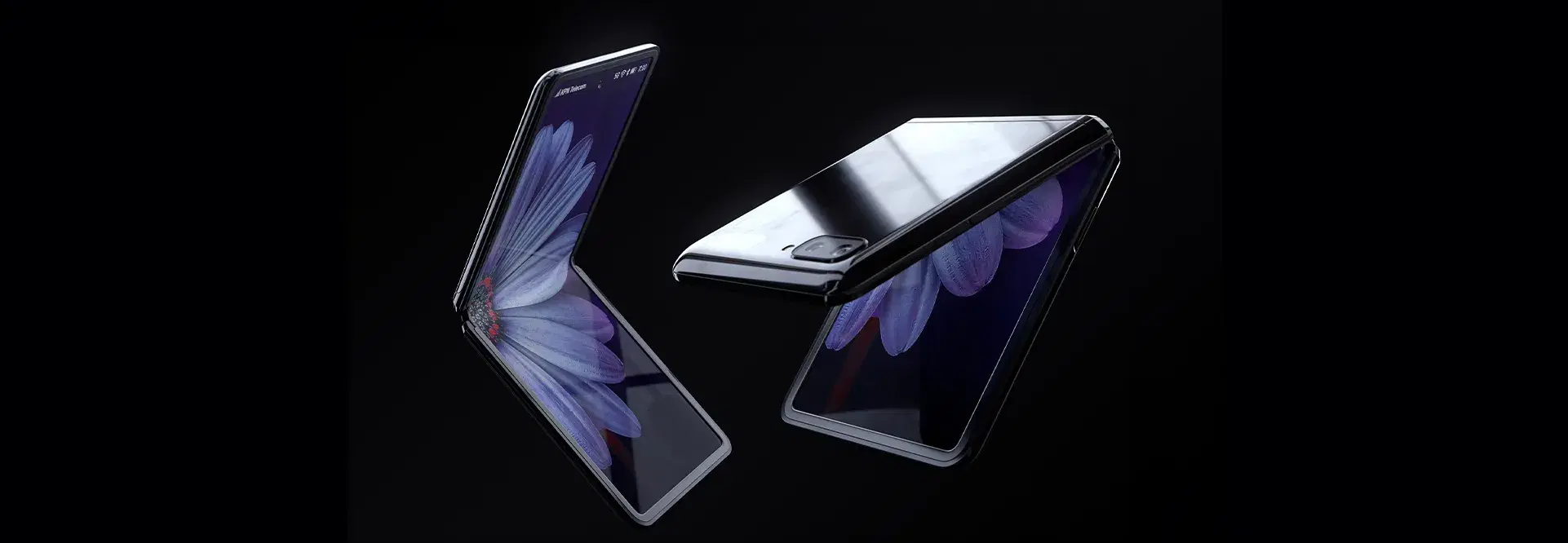
Whether you call them flip phones, flippable foldables, or clamshells, one thing is for sure: this form factor has made a huge comeback since the early 2000s.
There's no denying Samsung's pivotal role in bringing this type of phone back into the mainstream with the launch of the Galaxy Z Flip series in 2020. Now, four years later, the tech giant is gearing up to release the highly anticipated Galaxy Z Flip 6. It follows in the footsteps of the iconic Galaxy Z Flip 5, which took notes and improved in all the right places – from a bigger cover display and better cameras to a sleeker, gap-free design.
Get ready to mark your calendars for July or August because that's when the new Samsung flip phone is expected to make its debut. But if you're impatient like us and can't wait until then, we've got you covered with all the juiciest rumours surrounding the Galaxy Z Flip 6. If the Galaxy Z Flip 5 was a game changer, you’re in for an exciting ride because the new generation looks set to take things to a whole new level!
Flexing Muscle
A recent patent filing by Samsung Display to trademark the term 'IronFlex' with the Korean Intellectual Property Office (KIPO) has sparked intense speculation. Word is this development will mean a stronger folding screen than previous generations thanks to IronFlex. But with Samsung staying tight-lipped, IronFlex might surprise us all by rocking up as something entirely unexpected.
And there's more to the story – both the outer and inner screens of the Galaxy Z Flip 6 are said to become more durable. It’s rumoured that these screens will be built from the toughest Gorilla Glass yet, the Corning Gorilla Armor, just like the Galaxy S24 series. If these speculations prove true, Samsung will be poised to outmuscle the competition!
With stronger screens taking centre stage, we can't help but wonder if the Samsung Galaxy Z Flip 6 will be dust-resistant. While the tech giant has hinted at introducing dust resistance in its Z Flip line-up, the big question remains: which generation will kick things off? Hopefully, the Galaxy Z Flip 6 will be the first generation to say no to the dust bunnies.
Breaking Barriers
When the Samsung Galaxy Z Flip 5 hit the scene last year, it shook things up with its revamped cover display. Suddenly, that once-tiny 1.9-inch strip ballooned into an impressive 3.4-inch, giving users a playground of widgets and app functionalities without needing to pop open the device. And just like that, this upgrade obliterated one of the biggest obstacles with this form factor – always needing to flip open the device, even for the smallest tasks, like answering calls or previewing messages before deciding to ignore them.
Now, with the launch of the Samsung Galaxy Z Flip 6 drawing closer, rumour has it that the range is not done breaking barriers. We could see an even larger cover screen at 3.9 inches, making it significantly better than competitors like the 3.6-inch Razr+ and unlocking even better app experiences. Talk about levelling up. Here’s to flip phones that you don’t need to flip open that often – unless you really, really want to.
Compact Clamshell With Clever Cameras
Flip phones may be smaller by design, but don't let that fool you. While you won't find a 200MP main camera crammed into these devices, they excel in capturing odd angles that bar-shaped phones can only dream of.
The compact Galaxy Z Flip 6 doesn't leave much wiggle room for major camera upgrades. Expect the usual suspects: a 10MP front camera and a 12MP ultrawide lens. However, there's a rumour suggesting that the main camera might see a massive bump up to 50MP from the standard 12MP. This would mean higher-quality pictures without needing to redesign the entire phone.
The good news is that the Galaxy Z Flip 6 isn't just relying on hardware. It's packing some serious brain power with Galaxy AI, promising cool software tricks to elevate your photos even further.
Flippin’ Awesome Performance
Now, for some rumours that are almost certain to come true. The Galaxy Z Flip 6 will more than likely be powered by the same top-tier chipset inside the Samsung Galaxy S24 range – the new Snapdragon 8 Gen 3 chip. In some regions, we may even see it powered by the Exynos 2400 chip.
RAM could jump to 12GB. If not, we can still expect a solid 8GB, with storage options of 256GB and 512GB. Although, wouldn't it be awesome if a 1TB version was added to the mix?
Too Thicc To Quit
It seems like the Galaxy Z Flip 6 might be getting a bit thicc. Recent high-res renders show that the device has a little more junk in the trunk, sparking speculation that it's making space for a larger 4000mAh battery. This means we can anticipate improved battery life and fewer worries about running out of power during the day.
Make Room For The Money-Saver
The juiciest rumour so far, is that Samsung may be releasing a new, more affordable option - the Galaxy Z Flip 6 FE (Fan Edition). Given that these devices are usually priced above R20 000, it would be fantastic to see a budget-friendly option added to the line-up.
Samsung Galaxy Z Flip 6: We can’t wait for sassy snapping
There's some serious sleuthing happening to uncover the secrets of the Samsung Galaxy Z Flip 6, and the early chatter looks promising! If these rumours turn out to be reality, you might have found your next clamshell chommie. We’re hoping to see a bigger cover screen, even stronger screens all-round and high-end hardware to elevate the whole experience. Plus, a stronger phone means a sassier snap after ending an annoying phone call. What more could we ask for?



